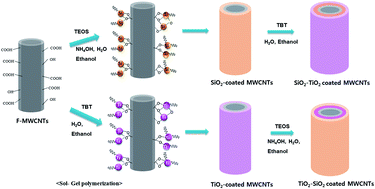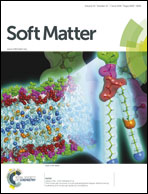Electrorheological response of inorganic-coated multi-wall carbon nanotubes with core–shell nanostructure
Abstract
The effect of coating thickness and sequence on the multi-wall carbon nanotube (MWCNT) surface on electrorheological (ER) activity is investigated. Silica-coated MWCNTs with different shell thicknesses and inorganic-coated MWCNTs with different shell sequences are fabricated using the sol–gel process. The morphology and elemental analyses of the core–shell structured MWCNTs were performed and the effect of coating thickness and coating materials on the MWCNT surface on ER and dielectric properties of inorganic-coated MWCNT suspensions have been analyzed from the measurement results of shear stress, viscosity, current density and permeability. The electrical conductivity of silica-coated MWCNTs decreases with an increase of the shell thickness. However, the dynamic yield stress and viscoelastic properties under an external electric field increased when the shell thickness reached 20 nm and then decreased with the thickness up to 40 nm. However, the titania-coated MWCNT suspension with a shell thickness of 40 nm showed the highest dynamic yield stress compared to the other core–shell structured MWCNT suspension at the same volume fraction. It has been found that the material of the outermost shell plays an important role in the ER performance. It has been concluded that the electrical conductivity and the permittivity of the MWCNTs can be controlled by adjusting the coating thickness and sequence of inorganic materials.


 Please wait while we load your content...
Please wait while we load your content...